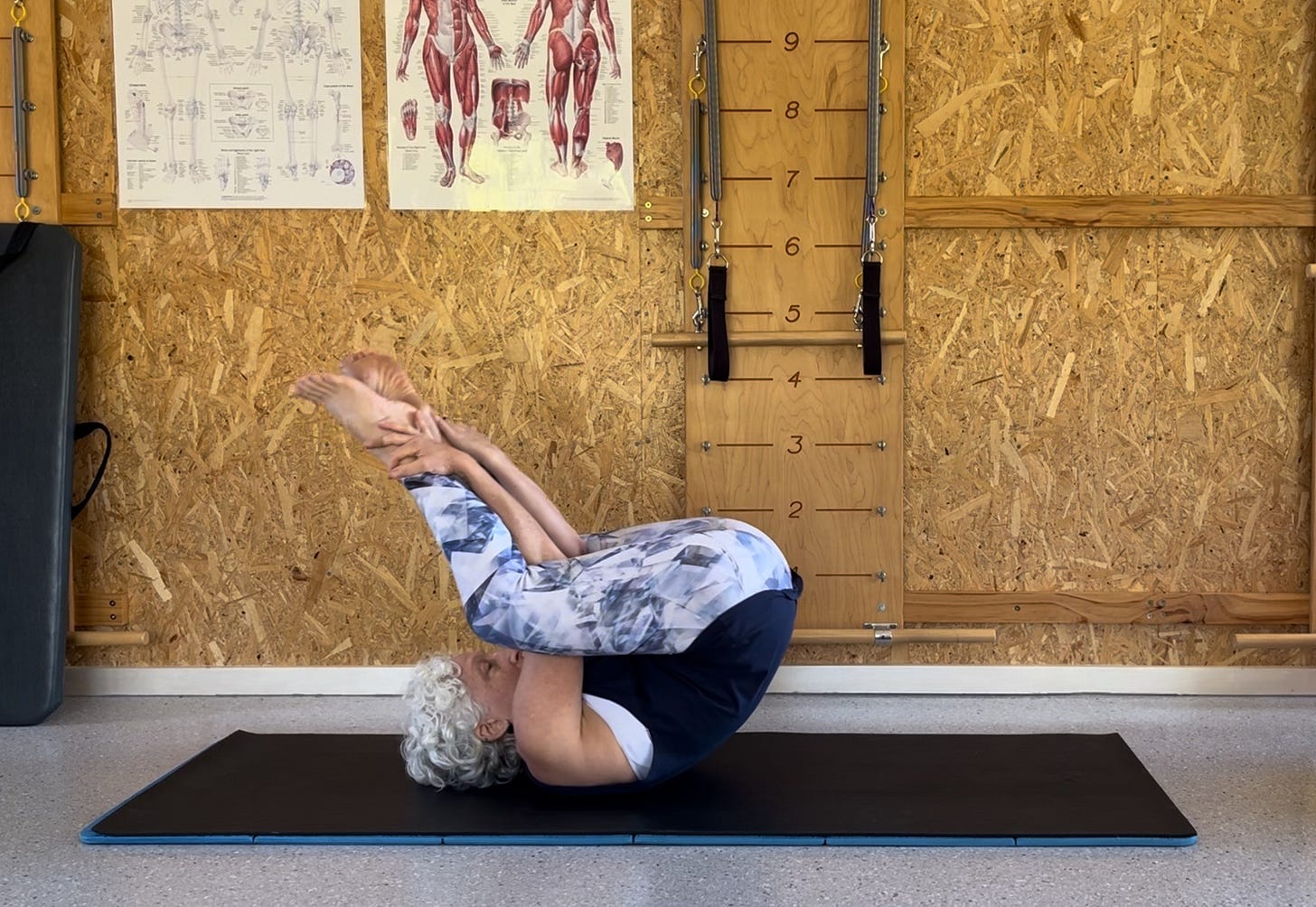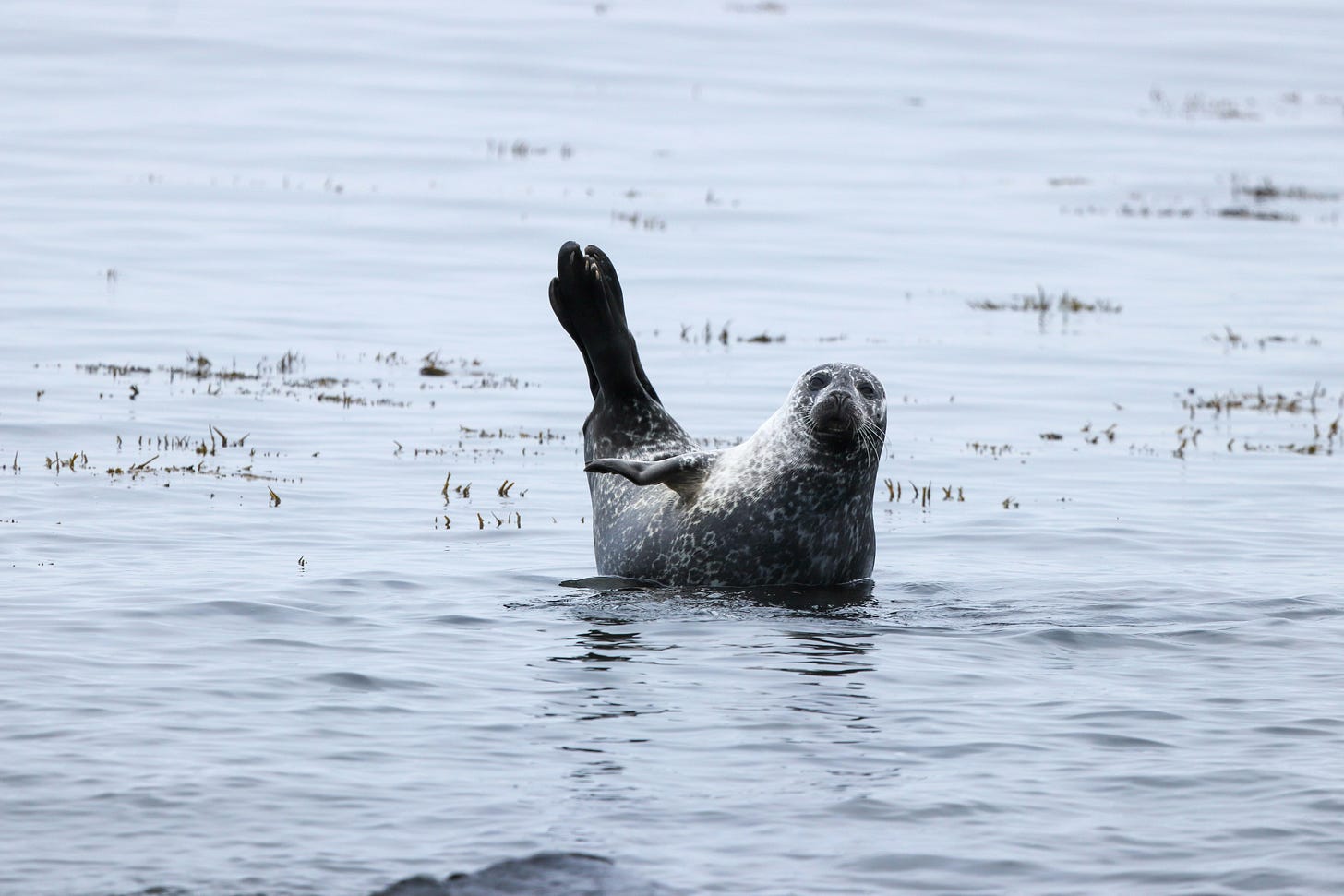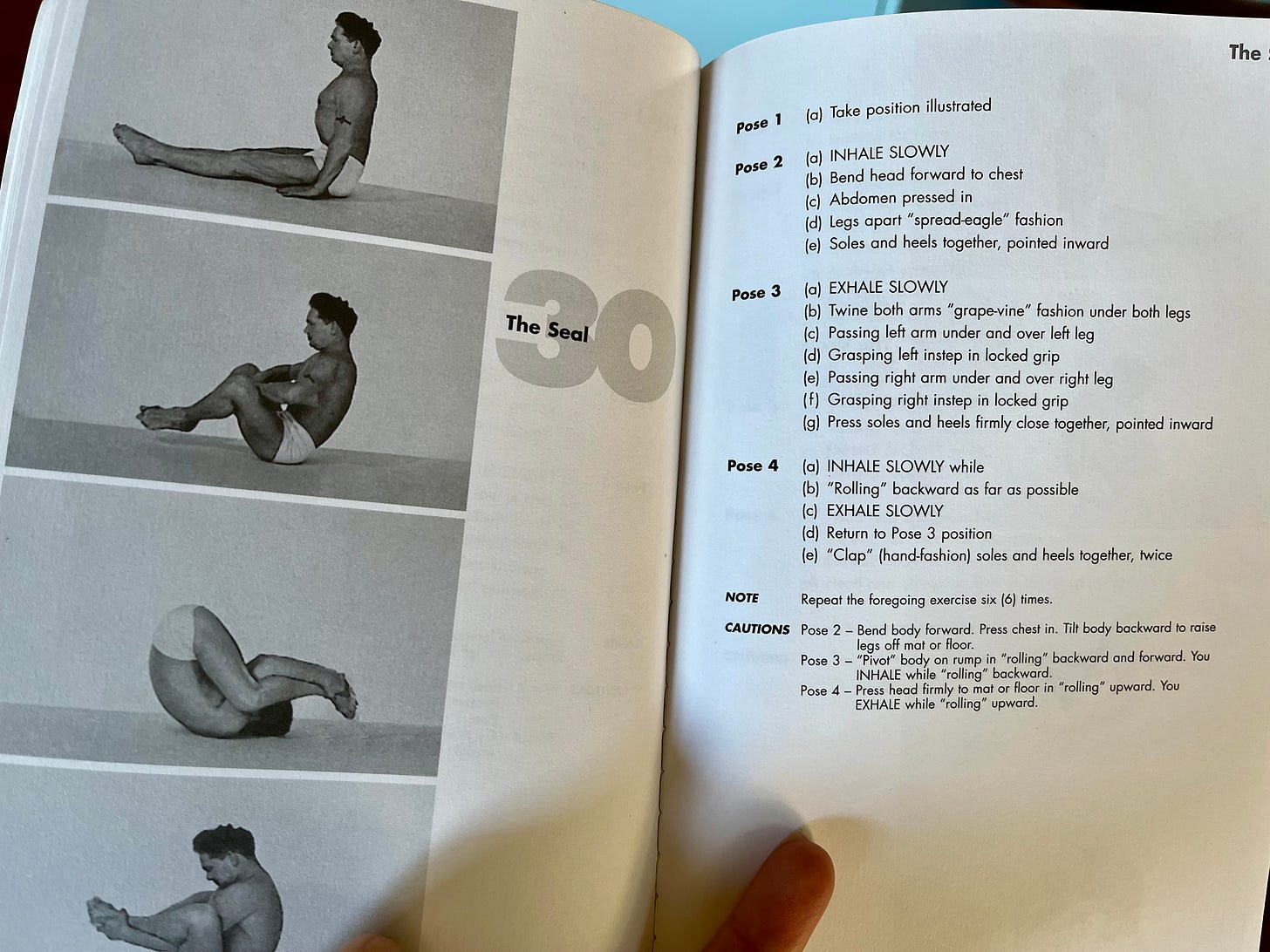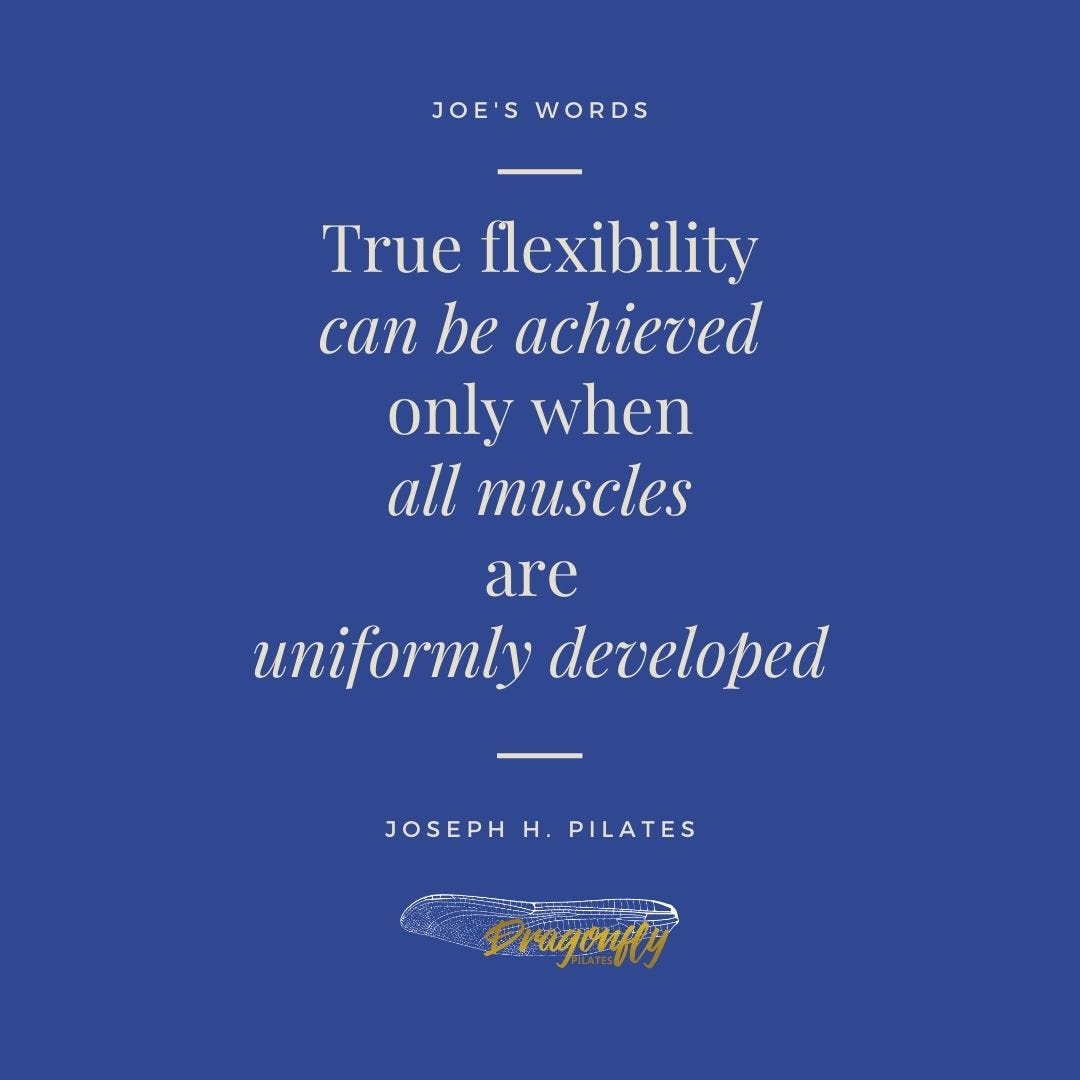Pilates Exercise Dive: Seal
Discover the Pilates Seal exercise, a vital component of Joseph Pilates' classical mat work sequence. Learn the what, how, and why for increased body awareness, flexibility, & balance.
Dive into the Pilates Mat Exercise SEAL
Hello Pilates enthusiasts, join me to explore one of the most playful and effective exercises in the Classical Pilates Matwork repertoire – Seal. This charming exercise not only engages your core, but also adds a bit of fun to your routine.
Let’s dive in (pun intended) to the What, How, and Why of Seal and learn its place in Joseph Pilates' original 34 mat exercise sequence.
Make sure to scroll all the way down for the exercise tutorial video!
Pilates SEAL: the WHAT
Seal is number 30 in Pilates’ running order of mat exercises and will most likely be included in your very first class. If it’s a basic to beginning class it will probably be one of the last exercises you’ll do (I’ll explain why a little bit later). For now, just know that it’s designed to improve your core strength, spinal flexibility, and coordination, while working on your uniform development.
Seal involves a bit of what I call a pretzel grip with a roll back and forth. You’ll lift your pelvis up and balance between your shoulder blades on the roll back. During the exercise you’ll also have two instances where you’ll clap your feet like a seal clapping its flippers. (Yep, it really is playful). As well as injecting a bit of silliness into your Pilates practice, Seal, like every other Pilates exercise embodies the principles of control, precision, and flow.
And now for some seal spam…
Photo by Héloïse Delbos
HOW to Perform SEAL
First Up, Joe’s Version
I always like to include his instructions from my copy of Return To Life Through Contrology especially because I love to revisit the photos of him and see how differently I was taught to teach the exercise (it’s good to add what we now know about body mechanics versus what was available in the 1940s when his book was published). Also, his notes and cautions are good reminders of what he wanted to emphasise.
Pose 1
(a) Take position illustrated
Pose 2
(a) INHALE SLOWLY
(b) Bend head forward to chest
(c) Abdomen pressed in
(d) Legs apart “spread eagle” fashion
(e) Soles and heels together, pointed inward
Pose 3
(a) EXHALE SLOWLY
(b) Twine both arms “grape-vine” fashion under both legs
(c) Passing left arm under and over left leg
(d) Grasping left instep in locked grip
(e) Passing right arm under and over right leg
(f) Grasping right instep in locked grip
(g) Pressing soles and heels firmly close together, pointed inward
Pose 4
(a) INHALE SLOWLY while
(b) "Rolling" backward as far as possible
(c) EXHALE SLOWLY
(d) Return to Pose 3 position
(e) “Clap” (hand fashion) soles and heels together, twice
NOTE
Repeat the foregoing exercise six (6) times.
CAUTIONS
Pose 2 – Bend body forward. Press chest in. Tilt body backward to raise legs off mat or floor.
Pose 3 - “Pivot” body on rump in “rolling” backward and forward. You INHALE while “rolling” backward.
Pose 4 - Press head firmly to mat or floor in “rolling” upward. You EXHALE while “rolling” upward.
HOW to Perform SEAL
My Amendments
Pose 1 - rotate your legs to Pilates V and scootch your hips forward to your heels so you’re already in your deep C curve. Once in position you’ll be behind your sit bones on your tush.
Pose 2 - make sure to find the long supported curve from head to tail, think about being in a hammock lifted from both ends.
Pose 3 - gently squeeze the arms with the inner thighs to engage your adductors and focusing on your midline.
Pose 4 - don’t roll back as far as possible but try to balance on your shoulder blades keeping your head from the mat by maintaining your 100 curl.
A note on the claps - First, yes, this is the seal flipper connection and second make sure that you’re not just clapping your feet. You actually want to emphasise hip disassociation, which is just a fancy way of saying that your hips and legs move freely in relationship to one another.
Pilates SEAL: the WHY
Yes the clapping is fun (I even had a client who used to bark while they were performing it) but Seal is more than just a playful exercise. Here’s why it holds a crucial spot in the Classical Pilates matwork flow:
Core Engagement: The shape of the exercise and the rolling motion requires constant core activation, helping to strengthen and stabilise your abdominal, low back, and hip muscles.
Spinal Flexibility: Seal enhances the flexibility and mobility of your spine, promoting a healthy back. We’re looking for a long even curve and a lot of us have clunky spots. It’s one of the exercises that trains us to use the abdominals to support the stretching and opening up of the spine.
Balance and Coordination: Balancing just behind your sit bones and coordinating the claps with the suspension of the breath and roll improve your overall body awareness and coordination. Plus you’ll know if you overuse one side of your body because you won’t roll straight back and up.
Flow and Rhythm: Seal encapsulates the Pilates principles of flow and rhythm, and depending on your tempo can encourage a graceful, suspended, and controlled movement pattern or something a bit more vigorous and percussive.
Proprioceptive Awareness: Whenever we go upside down and change how gravity affects our body, our proprioceptive system is challenged (which is a good thing).
Tips
Remember to keep your core engaged and move smoothly, avoiding any jerky motions. This exercise should feel like a gentle massage for your spine while challenging your balance and coordination.
Don’t forget the power of the breath, especially the exhale - it can help propel you back up to your opening position.
If the pretzel/grapevine arms are not making your shoulders happy, modify by holding behind the knees (but skip the claps).
Since Pilates is a system of movement I always find it’s helpful to look at what other exercises are inside the one you’re performing. In Seal I see Rollover, Rolling Like A Ball, and Spine Stretch (just to name a few).
Incorporating Seal into your Pilates practice serves as a playful reminder that exercise can be both fun and effective.
Final Thoughts
Here are my top three reasons why Seal is at the end of class (or close to the end if you’re doing all 34 original exercises)
That beautiful massage for your spine - please and thank you!
Other than the claps, Seal’s pathway is in the saggital plane, i.e. it’s a simple movement pattern. This slows you down, helping to reaffirm (to the best of your ability) your body’s side to side symmetry.
The rhythmic nature of the exercise, especially if you can slow it down and find the suspension moments while you’re clapping, calms your nervous system, preparing you to stand up, re-ground, and go about your day.
The Pilates Seal is a delightful addition to your workout routine, aka your Pilates practice, that brings the perfect blend of flexibility, and fun. By understanding its importance in Joseph Pilates' classical matwork, you can appreciate the depth and effectiveness of this exercise. Next time you’re on the mat embrace the playful power of the Pilates Seal.
Scroll under Joe’s quote for the video tutorial - enjoy!
Until next time,
xBec
The information contained above is provided for information purposes only. The contents of this blog are not intended to amount to advice and Rebecca Forde disclaims all liability and responsibility arising from any reliance placed on any of the contents of this post







Lovely one for today Bec. My challenges with this exercise are that I first have to get the sacral flexibility (for me its a pelvic curl with feet together and knees out wide) Then i have to really concentrate to keep my shoulders down out of my ears. I need to be mindful of the length of the curve as I go back. Also external rotation stiffness so I struggle to get my heels together and finally the pause on the shoulders......I tend to be clapping all the way back down. Lots to work on..... very diagnostic exercise!! Thanks a ton.